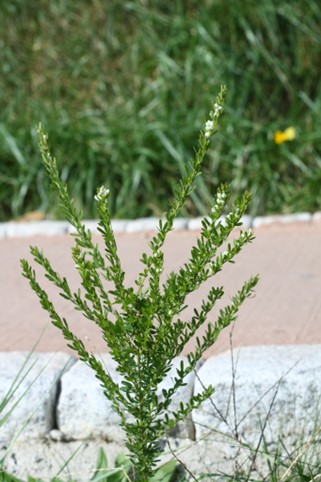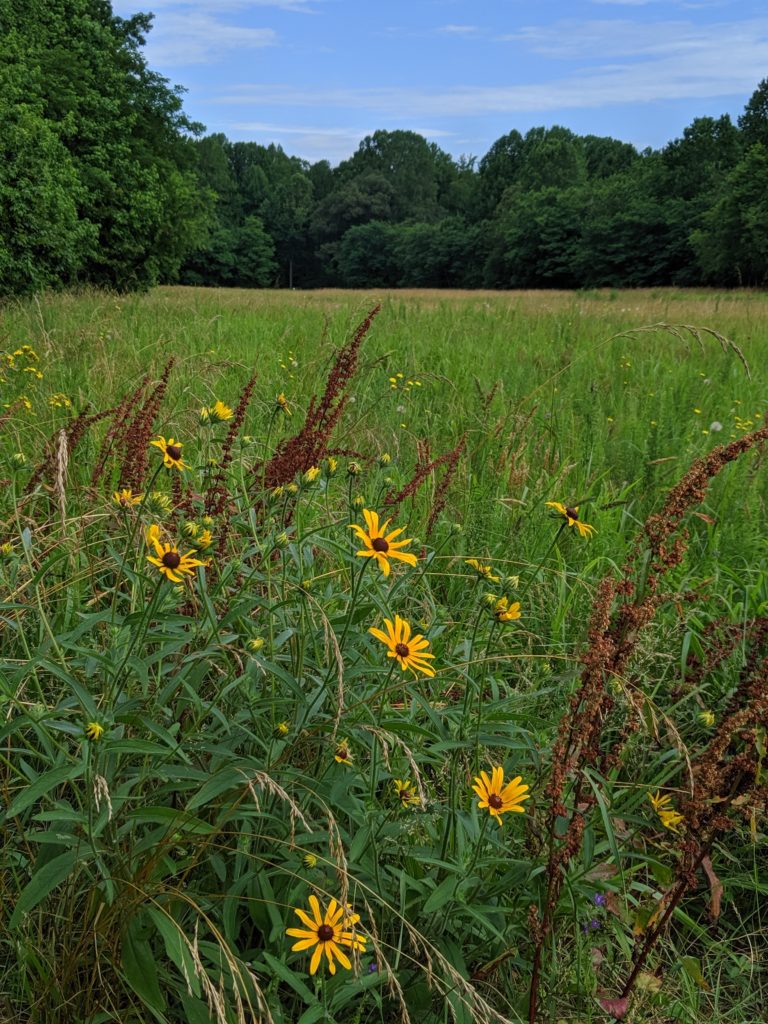By Clara Brill-Carlat, Chesapeake Conservation Corps Intern
This is the time of year when ACLT’s woods and meadows are full of life: trees are a vibrant green, pawpaw fruits are beginning to appear, and grass is growing faster than it can be mowed. If you’ve recently hiked on the South Side trails or the North Side’s Griffin Meadow Trail, however, you’ve probably noticed that the nearby meadows look decidedly subdued. The large meadow on the South Side and the narrow meadow inside the Griffin Meadow Trail were both sprayed with herbicide on June 24th to control infestations of Chinese lespedeza, an invasive plant. Lespedeza outcompetes native plants, is not a food source for Maryland’s wildlife, and is difficult to eradicate because it stores many seeds in the soil.
Click here for more information about lespedeza.
Scroll through the photos below to see the progression of the work thus far.

As emphasized in the Five Year Plan, one of ACLT’s land management goals is to establish permanent meadows at the North and South Side trailheads by actively managing for native meadow vegetation. Controlling the spread of lespedeza is key to maintaining healthy meadows that can support pollinators and other wildlife.
The spraying of the South Side meadow followed a controlled burn that the Maryland Forest Service conducted this past March. (The narrow meadow by the Griffin Meadow Trail was burned and sprayed in 2021 before being sprayed again this June.) The burn spurred the germination of lespedeza seeds in the soil, which caused more lespedeza to grow just in time to get hit with herbicide. The burn also depleted the supply of lespedeza seeds left in the soil for future years. From March to June, the South Side meadow transformed from a charred wasteland to a lush field full of grasses and lespedeza, all of which grew rapidly after the burn. The recent herbicide spraying has reduced both the South Side and North Side meadows to visually unappealing swaths of dead grass. However, while the meadows look brown and unhealthy now, repeated combinations of controlled burns and herbicide applications will help native vegetation flourish without being overtaken by lespedeza.

ACLT’s objective is to create and maintain meadows consisting primarily of native plants where pollinators and wildlife can flourish.
Click here to read ACLT’s blog post about the 2021 controlled burns.
Questions? Comments? Email us at aclt@acltweb.org or call (410) 414-3400.